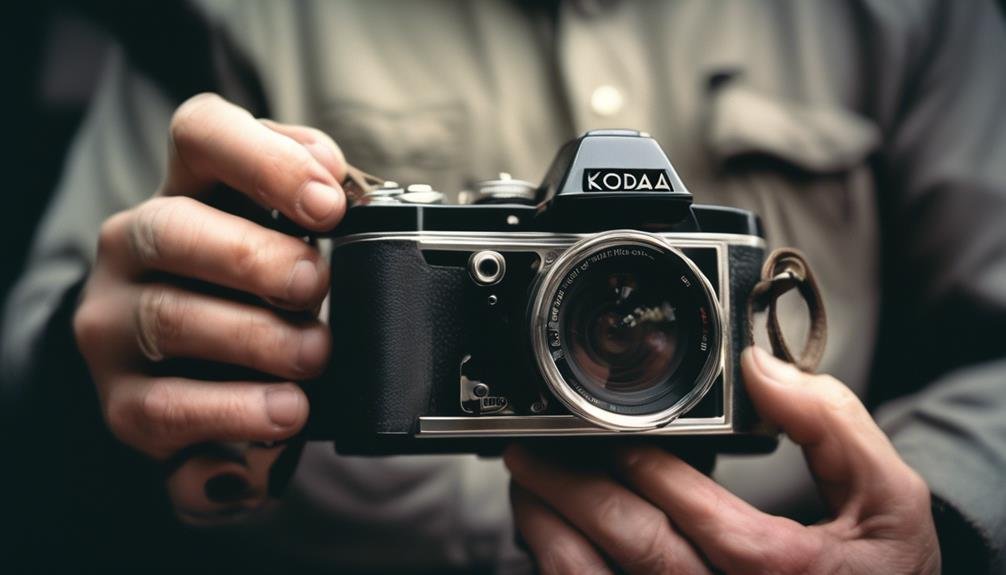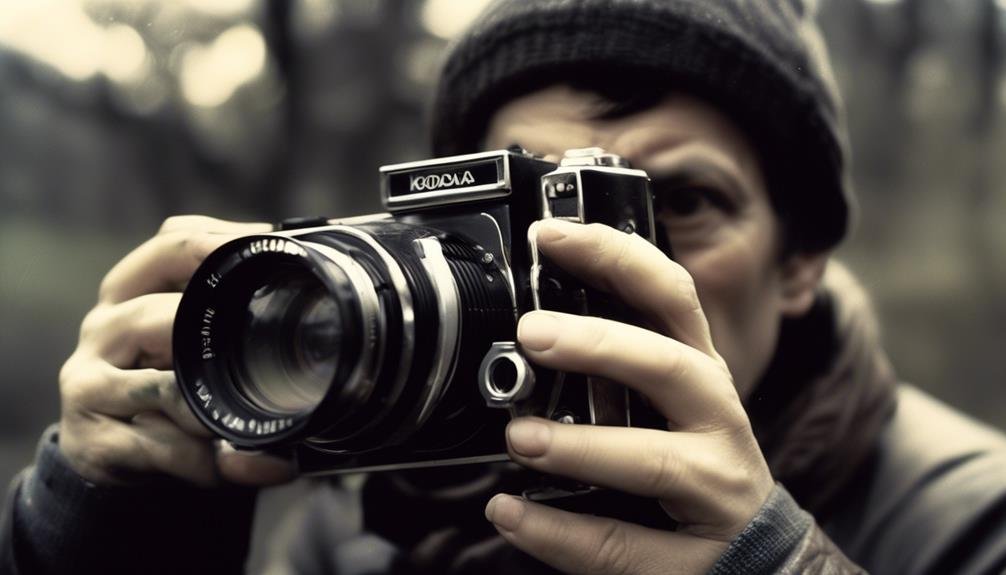
When it comes to capturing the perfect shot, we've all experienced the frustration of blurry or shaky images, especially in low-light conditions or when shooting on the go. But what if I told you there's a game-changing solution that can significantly enhance the quality of your photos and videos? Top mirrorless cameras with image stabilization (IS) are revolutionizing the way we capture moments, providing steady, crystal-clear imagery that was once only achievable with bulky, expensive equipment. But how exactly does image stabilization work, and why should it be a priority when choosing a camera for your photography needs?
Benefits of Image Stabilization
With image stabilization, photographers can capture sharp, clear images even in challenging shooting conditions, making it a valuable feature in mirrorless cameras. This technology works by reducing camera shake, resulting in improved sharpness and clarity in photos and videos. Whether shooting in low light, using a telephoto lens, or capturing fast-moving subjects, image stabilization allows for greater flexibility and creativity in various shooting scenarios. Mirrorless cameras with image stabilization enable users to achieve professional-quality results without the need for a tripod, making them ideal for on-the-go photographers and videographers. This feature is particularly beneficial for handheld shooting, as it compensates for small, unintended movements, ensuring that images remain sharp and steady. By incorporating image stabilization into mirrorless cameras, photographers and videographers can elevate their craft, pushing the boundaries of what is possible in terms of capturing crisp, high-quality content. As technology continues to advance, image stabilization represents a key innovation that enhances the overall shooting experience and sets mirrorless cameras apart in the market.
Top Mirrorless Cameras With IS
When exploring the realm of top mirrorless cameras with image stabilization, one can easily appreciate the enhanced sharpness and clarity these advanced features offer in various shooting conditions. The top mirrorless cameras with stabilization technology not only provide superior image quality but also offer a seamless shooting experience. Here are some of the top mirrorless cameras with image stabilization that are currently making waves in the photography world:
- Sony Alpha a7 III: This full-frame mirrorless camera boasts 5-axis in-body image stabilization, allowing for steady shots even in low light conditions.
- Fujifilm X-T4: With its advanced 6.5-stop image stabilization, this mirrorless camera ensures crisp and blur-free images, making it ideal for handheld shooting.
- Canon EOS R5: This high-resolution mirrorless camera features 5-axis sensor-shift image stabilization, providing remarkable stability for both stills and videos.
- Panasonic Lumix GH5: Known for its outstanding stabilization system, this mirrorless camera offers 5-axis dual image stabilization, delivering steady shots even when shooting on the move.
These top mirrorless cameras with IS are revolutionizing the way photographers capture moments, offering unparalleled image stabilization technology that sets new standards in the industry.
Image Stabilization Technology

Image stabilization technology enhances the sharpness and clarity of images by minimizing the impact of camera shake during photography or videography. Camera stabilization is crucial for capturing crisp, clear images, especially in low light conditions or when using telephoto lenses. IS technology advancements have revolutionized the way photographers and videographers work, allowing for greater flexibility and creativity in capturing stunning visuals.
Modern mirrorless cameras are equipped with advanced image stabilization systems that can detect and compensate for various types of movement, including angular and shift movements. This technology helps to counteract the natural hand tremors and movements that can occur when shooting handheld, resulting in sharper images and smoother videos.
The latest IS technology advancements also extend to video recording, providing steady footage without the need for additional stabilizing equipment. This is particularly beneficial for content creators and videographers who require flexibility and mobility when shooting dynamic scenes.
Importance of IS in Photography
Our discussion of the importance of IS in photography naturally follows from the pivotal improvements in IS technology we've explored, which have fundamentally transformed the way photographers and videographers capture stunning visuals. Image stabilization (IS) plays a crucial role in photography, enhancing the quality of images and the overall shooting experience. Here's why IS is indispensable in photography:
- Improved Techniques: IS enables photographers to take sharper and clearer shots, even in challenging conditions such as low light or when using zoom lenses.
- Enhanced Creativity: With IS, photographers can experiment with longer exposure times, leading to more creative and visually compelling images.
- Best Practices: Incorporating IS into photography best practices ensures that photographers can consistently produce high-quality images, regardless of external factors.
- Expanded Possibilities: IS technology opens up new opportunities for photographers, allowing them to capture dynamic, handheld shots that were previously difficult or impossible to achieve.
Choosing the Right IS Camera

Choosing the right camera with image stabilization is crucial to achieving sharp, clear, and professional-quality photographs in a variety of shooting conditions. When considering an IS camera, it's essential to focus on specific camera features and capabilities that align with your photography needs. Look for cameras with in-body image stabilization (IBIS) or lens-based stabilization to counteract camera shake and produce sharper images. Additionally, consider the effectiveness of the IS system in low light or when capturing fast-moving subjects.
A comprehensive buying guide for IS cameras should also highlight the importance of assessing the number of axes of stabilization, as well as the maximum number of stops of compensation. These factors can significantly impact the camera's ability to mitigate blur caused by hand movements. Furthermore, the presence of advanced features such as dual IS, which combines in-body and in-lens stabilization, can further enhance the overall stabilization performance of the camera.
When making a decision, prioritize cameras that offer customizable IS settings, as this can provide greater flexibility and control over the stabilization process. Lastly, explore the compatibility of the camera with a variety of lenses, as different lenses may offer unique stabilization capabilities. By evaluating these camera features, you can confidently select the right IS camera that aligns with your innovative photography aspirations.
Frequently Asked Questions
How Does Image Stabilization Affect Battery Life in Mirrorless Cameras?
Image stabilization affects battery life in mirrorless cameras by consuming more power, especially when shooting video. It's crucial to choose a top camera with efficient stabilization technology to optimize battery usage during extended shooting sessions.
Are There Any Specific Types of Photography Where Image Stabilization Is Not as Important?
In sports photography, image stabilization is less crucial due to faster shutter speeds, while in landscape photography, it's vital for sharp, clear images. Understanding these distinctions helps us maximize the potential of image stabilization in various photographic scenarios.
Can Image Stabilization Be Turned off on Mirrorless Cameras?
Absolutely, image stabilization can be toggled on and off on mirrorless cameras. This feature allows for manual override capabilities, beneficial for advanced photography techniques. It's like having a stabilizing hand when needed.
Are There Any Potential Downsides to Using Image Stabilization in Photography?
When using image stabilization, potential drawbacks include reduced battery life and added weight. Also, effectiveness limitations can occur in capturing fast-moving subjects. Despite this, the benefits generally outweigh these concerns for most photography needs.
How Does Image Stabilization in Mirrorless Cameras Compare to Traditional DSLR Cameras?
When comparing image stabilization in mirrorless cameras to traditional DSLRs, we find superior video performance, enhanced low light capabilities, and broader lens compatibility. This innovation is a game-changer for sports photography.
